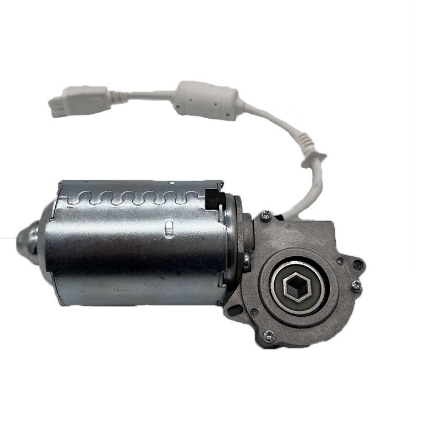
The production and distribution of alternating current motors, a vital component in many industries, have been majorly affected by ongoing supply chain challenges. These disruptions are attributable to a mix of causes including the COVID-19 pandemic, geopolitical issues, and global changes in demand resulting in problems that affect the entire supply chain starting from raw material sourcing to final product delivery.

Raw Material Shortages
One of the key barriers to manufacturing AC Motors is a lack of sufficient raw materials. Essential components like steel, copper, and magnets made from rare earth minerals have experienced supply side constraints due to mining interruptions as well as heightened demands from other sectors coupled with logistical logjam. These scarcities have resulted in escalated costs and delays in their manufacture which has affected meeting deadlines for manufacturers.
Logistical Bottlenecks
Global transport and logistics infrastructure are stretched thin because of port congestions caused by container shortages and limited shipping capacities. As a result of these logistical challenges there have been substantial delays in both raw material imports/exports as well finished goods deliveries. AC Motor industry that usually depends on timely deliveries both for production and distribution has witnessed increasing lead times as well as elevated transportation costs. Manufacturers get hard times keeping their inventories leading to possible order backlogs which would cause dissatisfaction among their customers.
Geopolitical Tensions
Furthermore, the geopolitical tensions such as trade wars and tariffs have also led into disturbances within the AC Motor supply chain. For example, the US-China trade war increased tariffs on essential components thereby raising manufacturer’s cost of production. Additionally restrictions on export importation further complicate sourcing of raw materials plus components thereby forcing firms to seek alternative suppliers at both a time cost as it involves time or money if they decide not to ship directly.
Impact on Production
These disruptions in supply chains have deeply affected AC motor production systems. There are inconsistencies regarding availability of raw materials and components making it hard for manufacturers to maintain consistent production schedules. This inconsistency has increased the cost of production because companies have to pay varying prices of supply overtime as well as possible rise in workforce wages to meet deadlines. Moreover, production processes have been complicated by the need for contingency planning and alternative sourcing strategies.
Strategies for Mitigation
AC Motor manufacturers are adopting several strategies to mitigate these challenges. A major policy is to diversify the supplier base such that no manufacturer depends too much on one source of key components. Additionally, investing in local production capabilities can reduce dependence on international supply chains and minimize the impact of global disruptions. Implementing advanced inventory management systems and adopting just-in-time production practices can also help manufacturers better align supply with demand, reducing the risk of overstocking or stockouts.
Conclusion
Supply chain problems remain a significant obstacle to AC motor sector’s operations affecting production as well as distributions at different levels. While the situation stands fluid, manufacturers ought to actively respond to these disruptions through strategic purchasing, logistical improvements together with improved stock control measures that will go a long way in ensuring effective mitigation approaches are put in place from time to time. In doing so, the industry will be able to successfully surmount the complexities inherent in managing global supply chains thereby assuring its growth and stability going forward.